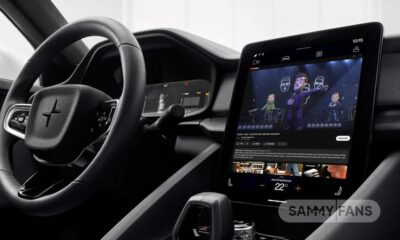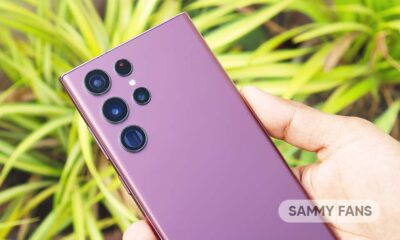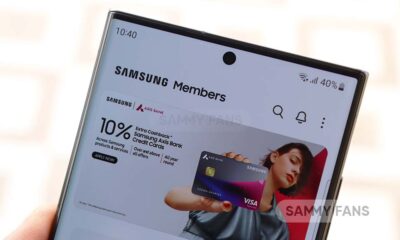News
Samsung Galaxy A73 press render emerges showing flagship-like super slim bezels
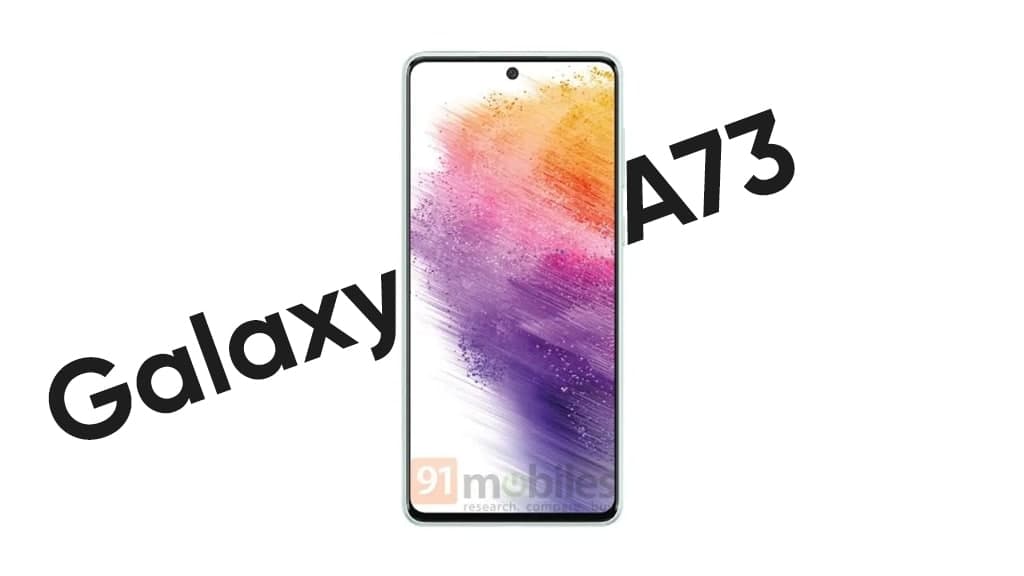
After the Galaxy S22 series, Samsung has started launching new mid-range and budget phones for 2022. Recently, Samsung unveiled the Galaxy A13 and Galaxy A23 smartphones, while the flagship-like Galaxy A73 is on the way as we just got its very first look, thanks to press render.
Courtesy of Evleaks via 91mobiles, we now have the first look at the upcoming Samsung Galaxy A73 smartphone. The render showcases super-slim bezels, making it the younger brother of the vanilla Galaxy S22 in terms of design language.
Join SammyFans on Telegram

Aside from the front look of the display, the source also shared another image that consists of details regarding key specs such as the Camera, and buttons. According to the material, the Galaxy A73 will have a quad camera setup including a 64MP OIS camera, 12MP ultra-wide camera, 5MP depth sensor, and a 5MP macro lens.
Furthermore, it comes with an impressive 32MP front camera under a punch hole for detailed selfies. While it has a SIM tray, primary microphone, USB C-Type charging port, and speaker at the bottom. Besides, we can expect the Galaxy A73 could also feature stereo speakers similar to its predecessor.

Read more: Samsung Galaxy A73 5G will feature Snapdragon 778G processor
To date, Samsung has not revealed anything about the upcoming Galaxy A53 and Galaxy A73 smartphones. Meanwhile, we can expect the company will hold an Awesome Unpacked event in late March or early April to introduce the new Galaxy A series phones.
| Source |
News
Samsung Galaxy XR device isn’t coming this year, report says

Samsung could not launch Galaxy XR device this year a new report says. The anticipated gadget is now rumored to be about 6 months late. The company has been developing an XR device in collaboration with Google and Qualcomm.
The report says Samsung has changed its initial Galaxy XR headset plan to start production at the end of the year and launch early next year. Now, it is expected to be produced and released in the second quarter of next year.
The South Korean tech giant reportedly delayed XR production by two quarters. Industry insiders believe that the XR device could not be produced this year. The schedule has been delayed by about 4-5 months, pushing the launch to 2H26.
Samsung seems to have adopted a wait-and-see approach by adjusting its production and release schedule. This is due to slower than expected growth of the XR market despite the release of Apple’s Vision Pro following Meta.
Smart XR Glasses
Recently, Qualcomm’s CEO revealed that the XR device could come as glasses, not a Vision Pro-like headset. The product could be integrated with artificial intelligence, offering a stunning experience connected to a smartphone.
Samsung’s XR would feature OLEDoS and direct and indirect time-of-flight (dToF and iToF) sensors. Despite its small size, it is classified as a next-generation display as it can achieve ultra-high resolution of over 4K.
News
Samsung Galaxy Watch to use EV-like all-solid-state battery in 2024

Samsung could debut its first all-solid-state battery smartwatch in 2026. The company has recently announced the completion of small-sized all-solid-state battery development. It is expected to debut with a Galaxy Watch in 2026.
On September 22, Samsung Electro-Mechanics announced that it had successfully developed the world’s first small-sized all-solid-state battery. The company aims to commence the mass production of its new solution in 2026.
As compared to Li-ion batteries, all-solid-state batteries offer enhanced safety and greater flexibility in terms of shape. The company reportedly sent prototypes to its consumers for testing before production approval.
The next-gen all-solid-state battery features an industry-leading energy density of 200Wh/L. It can also be manufactured in curved shapes, making it ideal for smartwatches. Safety is also increased thanks to the non-flammable solid electrolyte.
Chosun expects the 2026 Galaxy Ring and Galaxy Watch could be the first set of devices to use the new battery technology. Samsung Elec won’t make any decision in a hurry as such a major change would be dangerous if not tested rigorously.
Samsung Electro-Mechanics explained that the battery is produced by stacking thin layers of electrodes and electrolyte materials, similar to the MLCC (multilayer ceramic capacitor) manufacturing technology it already possesses.
News
Samsung targets 2026 for 3D stacked SoC with hybrid bonding and TC-NCF
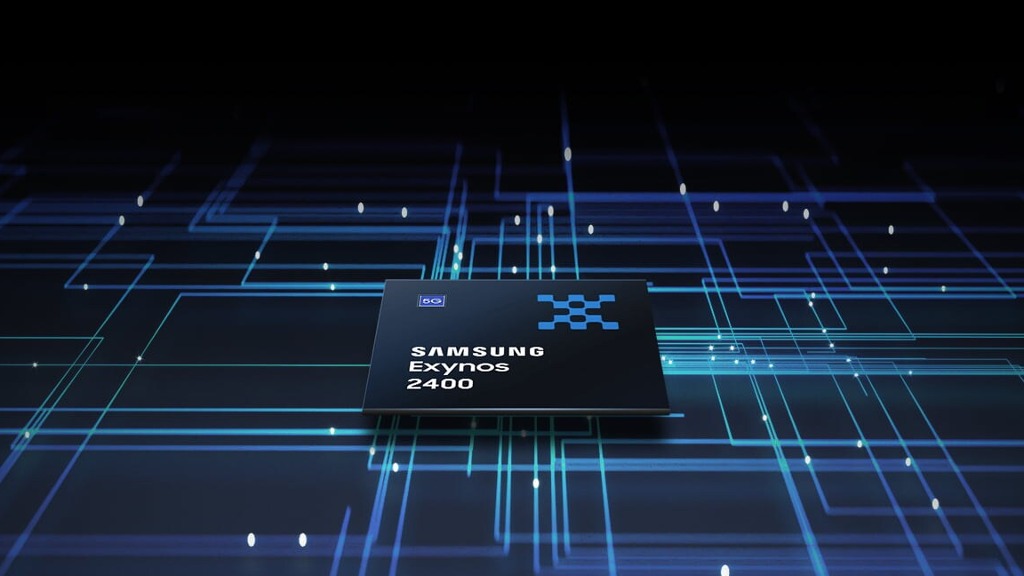
Samsung plans to begin mass production of 3D stacked SoC in 2026. The company wants to improve performance and overcome the difficulties of semiconductor miniaturization by stacking semiconductors with different functions.
The South Korean tech giant reportedly considering 3D stacked SoC. The company is pursuing both hybrid bonding and TC-NCF stack semiconductors vertically. It’s similar to HBM, which vertically stacks DRAM to increase bandwidth for AI calculations.
Samsung has recently conducted performance tests on stacking mobile APs with TC-NCF and has reportedly obtained good results. Furthermore, using TC-NCF for mobile APs is analyzed as a reflection of confidence in the technology.
Well, Samsung Foundry is not doing well for the next-gen process. The 3nm yield has not yet reached the threshold limit to enter mass production. Meanwhile, it’s good to see Samsung is continuing to innovate for a better future.
Hybrid bonding is an advanced packaging tech that directly connects the copper paths through which semiconductors exchange signals. The technology is not yet mature, hence, it cannot be used in system semiconductors for mobile devices.
To address this flaw, the company is reportedly developing both hybrid bonding and TC-NCF methods simultaneously. Before the hybrid bonding technology is perfected, TC-NCF will likely be applied first to implement 3D stacked mobile APs.

